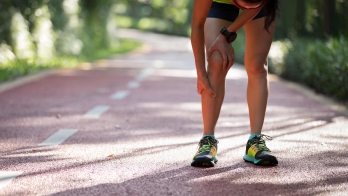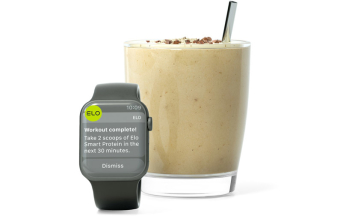The best supplements for cyclists based on biomarkers
Confused about the right supplements for optimal cycling performance? Rest assured, you’re not alone. Navigating supplements can feel overwhelming, especially when you’re trying to balance health and performance. As it turns out, your biomarkers can be helpful for determining which supplements you may (and may not) need to cycle at your best.
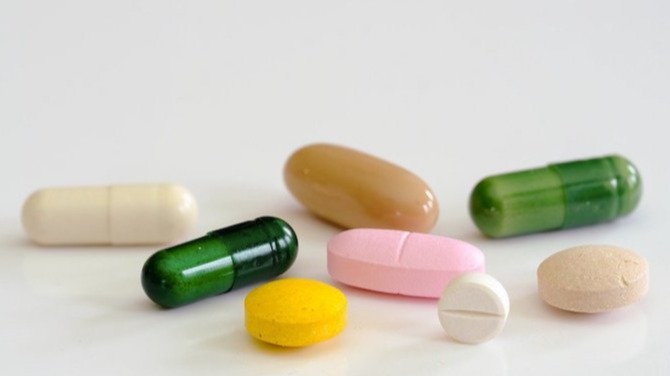
The thing is there's no "one size fits all" for nutrition - and that goes for supplements too. What's right for your cycling teammate isn't necessarily right for you, and your supplement mix should be tailored to your unique needs. With that in mind, we've rounded up the best supplements for cyclists, based on individual biomarkers (and science!).
(And if you want to read more about nutrition for cyclists, check out our comprehensive, science-backed guide here).
Iron
Let’s start off with a big one - iron. If you’re a lady cyclist, this may be a nutrient you’ve thought about before, but active men can also fall short of the iron recommendations too. Long-distance cycling increases iron needs, as does training at high altitudes, menstrual blood loss, and injury [1]. Among distance cyclists, females, and those eating predominantly plant-based diets, including vegans and vegetarians, are at the highest risk of iron deficiency.
Iron deficiency raises your risk for developing iron-deficiency anemia, a condition characterized by reduced oxygen-carrying capacity, fatigue, shortness of breath, dizziness, and poor immune function.
Iron deficiency, with or without anemia, can impair muscle function and limit work capacity and athletic performance by impacting oxygen transport to muscles [1]. Adequate iron intake is essential for cyclists, especially women, whose needs can be up to 70% more than the estimated average requirement [1].
Iron intake recommendations
For general wellness and fitness purposes, iron intakes that meet the recommended dietary allowance (RDA) are as follows [3]:
Women:18mg/day (age 19-50); 8mg/day (51+)
Men: 8mg/day (age 19+)
Distance cyclists and vegetarian athletes should aim for an iron intake greater than their RDA because these groups are at especially high risk for iron deficiency [1]. Plant-based iron tends to be less bioavailable than iron in animal foods.
Biomarker to watch
Serum ferritin
What is ferritin?
Ferritin is a blood protein that contains iron and is an indicator of iron stores.
What do ferritin results mean?
The normal range for blood ferritin for women and men are as follows [2]:
For women, 11 to 307ng/mL
For men, 24 to 336ng/mL
When and how to supplement iron
Serum ferritin levels <10 to <35ng/mL generally correspond with iron depletion or deficiency, however, the optimal range varies depending on the lab, practitioner, and other factors [1]. Your Elo Health Coach may recommend iron supplementation if serum ferritin levels are at or below 20 ng/mL.
Iron is available in many dietary supplements. Most multivitamins with iron provide 100% of the daily recommended amount, particularly those designed for women. However, it’s important to note that many multivitamins are made without iron, so be sure to read labels carefully.
Iron-only supplements are also an option and typically contain 65mg iron or more [3]. High-dose iron supplements, providing 45mg/day or more, are more likely to cause gastrointestinal side effects including nausea and constipation (no, thanks) [3].
To minimize stomach upset and constipation, take iron supplements with food in smaller doses throughout the day along in combination with eating a fiber-rich diet and drinking ample amounts of water.
Supplemental calcium can interfere with iron absorption, and many experts suggest taking these minerals at different times of the day to maximize effectiveness [3].
Food sources of iron
There are two forms of dietary iron, heme iron, and non-heme iron. Heme iron is found in meat, poultry, seafood, and fish. Non-heme iron is found in foods like beans, lentils, spinach, nuts, enriched bread, and fortified breakfast cereals.
Vitamin C increases iron absorption and foods rich in iron should be eaten in combination with foods containing vitamin C, such as citrus, strawberries, peppers, broccoli, and brussels sprouts.
Good to know
Reversing iron deficiency anemia can take several months, so it’s best to begin nutrition intervention before anemia develops [1]. Nutrition intervention can include increasing intake of iron-rich foods, with or without iron supplementation.
Too much iron can be dangerous and high-dose iron supplements should only be taken under medical supervision. Like many other nutrients, you can have too much of a good thing.
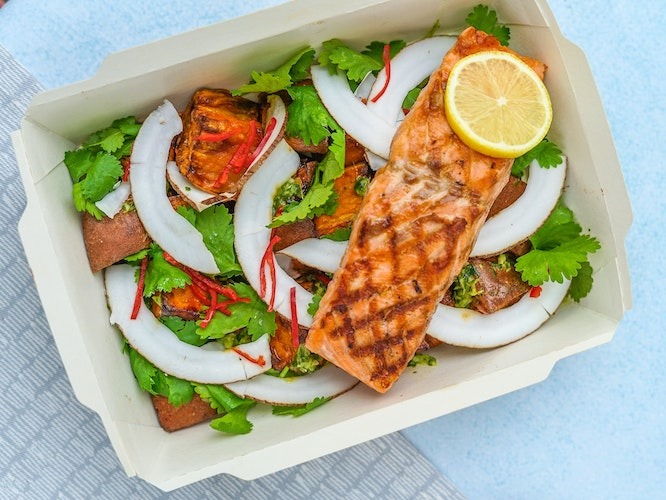
Vitamin D
This one gets a lot of press, but it’s well-deserved. Vitamin D is essential for optimal bone health, but emerging evidence suggests that the “sunshine vitamin” plays an important role in muscle function, injury prevention (including decreased risk of stress fractures), and acute respiratory illness [1].
Our bodies can make vitamin D from cholesterol and sunshine exposure, however factors like location, season, when and how often you train outdoors, skin color, and level of sun protection all impact endogenous vitamin D synthesis. Truth be told, most of us fall short on vitamin D at some point throughout the year.
Athletes who live at latitudes above 35°N (everything north of Tennessee) or who primarily train and compete indoors (Peloton enthusiasts, we’re looking at you!) are at the highest risk for vitamin D insufficiency [1]. Dark complexion, higher body fat content, or training early or late in the day, also increases your risk for insufficiency and deficiency [1].
Vitamin D intake recommendations
Daily intake recommendations for vitamin D are the same for both women and men but vary by age [4]:
Age 19-70: 15 mcg/day or 600IU daily
Age 70+: 20 mcg/day or 800IU
Many experts believe that the current vitamin D recommendations are too low and prescribe far more than the daily allowance set by the National Academy of Sciences.
Biomarker to watch
Serum vitamin D (also referred to as 25-hydroxyvitamin D or 25(OH)D)
What is 25-hydroxyvitamin D?
Dietary vitamin D2 and vitamin D3 are converted into 25 hydroxyvitamin D (aka 25(OH)D) in your liver and kidneys. Vitamin D blood tests typically measure 25(OH)D levels in your blood [5].
What do 25-hydroxyvitamin D results mean?
Considering the latest research and recommendations from the Institutes of Medicine, and The Endocrine Society, Vitamin D levels can be classified accordingly [1, 28, 29]:
Deficient: >20 ng/mL
Insufficient: 20-29 ng/mL
Adequate: 30-39 ng/mL
Optimal: 40-80 ng/mL
Upper limit/: 100 ng/mL
When and how to supplement vitamin D
To achieve or maintain adequate body stores of vitamin D, moderate daily supplementation of vitamin D3 1,000-5,000IU of vitamin D3 (cholecalciferol) should be considered if levels are at or below 40ng/mL.
Food sources of vitamin D
Few foods naturally contain vitamin D, but the best sources include fatty fish like trout, salmon, and tuna, and fish liver oils. Mushrooms also contain vitamin D2, though amounts vary depending on growing practices.
Fortified foods are by far the best source of dietary vitamin D. Almost all dairy milk and many plant-based milks are fortified with vitamin D3, as well as several breakfast cereals, some brands of orange juice, and yogurt [4].
Good to know
The UV index has to be 3 or higher to generate adequate vitamin D endogenously which only occurs year-round near the equator [7]. For this reason, Vitamin D supplementation is essential for many. It’s also worth noting that Vitamin D is a fat-soluble vitamin and should be taken with a source of fat to optimize absorption.

Calcium
Calcium is a well-known bone builder, but that’s not its only function. Calcium also plays an important role in regulating muscle contractions, nerve conduction, and blood clotting, and is another important nutrient for cyclists [1].
Calcium status is most commonly assessed by evaluating a person’s usual dietary intake rather than blood biomarkers because blood calcium often doesn’t reflect calcium in bones. However, biomarkers can sometimes be helpful in diagnosing long-term calcium deficiency and its associated effects.
Calcium intake recommendations
The recommended dietary allowance for calcium is as follows [8]:
Women: 1,000mg/day (age 19-50) to 1,200mg/day (51+)
Men: 1,000mg/day (age 19-70) to 1,200mg/day (71+)
Biomarkers to watch
Total serum calcium and ionized calcium
What is serum calcium/ ionized calcium?
The total calcium blood test measures the total amount of calcium attached to proteins in your blood. Classifications may vary between laboratories but normal values typically range from 8.5 to 10.2mg/dL (2.13 to 2.55 mmol/L) [6].
Ionized calcium is calcium in your blood that is not attached to proteins like albumin. Normal values typically range from 4.8 to 5.6 mg/dL or 1.20 to 1.40mmol/L [6].
What do serum calcium/ ionized calcium results mean?
Sustained low levels of total serum calcium and/or ionized calcium, typically indicate longer-term calcium deficiency, however, this is not always the case. Low calcium levels can also be indicative of chronic disease and should be investigated with your health professional.
When and how to supplement calcium
As previously mentioned, calcium deficiency does not produce short-term effects thus calcium supplementation is most commonly based on a person’s usual dietary intake rather than blood biomarkers.
You may benefit from calcium supplementation if your typical dietary intake of calcium falls below the recommended daily intake. Calcium supplements typically provide 500-1,500mg calcium depending on the brand [9].
Up to 1,500mg calcium/day paired with 1,500 to 2,000IU/day of vitamin D are needed to optimize bone health in athletes with low energy availability or menstrual dysfunctions [1]. Calcium doses above 1000-1300mg/day have been associated with an increased risk of heart attack so moderate supplementation is recommended for most (like other nutrients, you don’t need to go bonkers here) [9].
Calcium supplements typically come in the form of calcium carbonate or calcium citrate. For optimal absorption, calcium carbonate should be taken with food. Calcium citrate is absorbed equally well regardless of food intake.
Calcium absorption is highest in doses less than or equal to 500mg, thus larger doses are best split into 2-3 smaller doses throughout the day [8].
Food sources of calcium
Dairy-based milk, yogurt, and cheese are naturally rich in calcium, as are canned sardines and salmon, and certain vegetables including kale, broccoli, and Chinese cabbage. Fortified foods including plant-based milk and yogurt, fruit juices, tofu, and breakfast cereals, can also be good sources of calcium. One thing worth noting is that many plant-based sources of calcium contain oxalic acid and phytic acid, both of which decrease calcium absorption, so those on plant-based diets may need extra calcium.
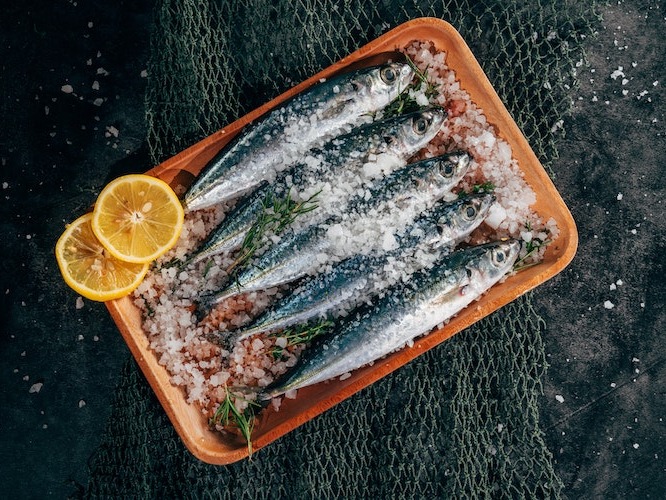
Omega-3s
Omega-3 fatty acids are polyunsaturated fats that fight inflammation and have been shown to be beneficial for heart health, liver function, hormones, and more [13, 14, 15]. Most of us fall short of the omega-3 recommendations, despite their impressive benefits.
There are three main omega-3 fatty acids: EPA (eicosapentaenoic acid), DHA (docosahexaenoic acid) and ALA (alpha-linolenic acid).
Most of the health benefits from omega-3s come from EPA and DHA, rather than ALA. In order for the body to utilize ALA, it must convert it to EPA, however, the conversion rate is low (less than 5%) and slow.
Emerging research suggests that omega-3 supplementation may play a role in enhancing training adaptation, exercise recovery, injury prevention, and subsequent performance in athletes [16]. (Learn more about why omega-3s are important for cyclists here).
Omega-3 intake recommendations
Currently, there is no recommended daily intake for omega-3 fatty acids, except for ALA, which is 1.1 g/day for women and 1.6 g/day for men [13]. The American Heart Association recommends two servings of low-mercury fatty fish per week and cyclists may benefit from additional omega-3 intake, especially during heavy training periods.
Biomarker to watch
Omega-3 index
What is omega-3 index?
A measure of the level of DHA and EPA in the blood, specifically in red blood cell membranes.
What do omega-3 index results mean?
Omega-3 index results are reported in percentages which are classified into three groups based on the associated level of cardioprotection [18]:
>8%: Adequate levels of DHA and EPA; greatest level of cardioprotection
4-8%: Moderately low levels of DHA and EPA; intermediate cardioprotection
<4%: Low levels of DHA and EPA; least cardioprotection
When and how to supplement omega-3s
If you’re not consuming fatty fish at least 2 times a week, have a low omega-3 index, and/or are training intensely, a supplemental dose of omega-3s can be helpful [17].
Typical fish oil supplements provide roughly 180mg EPA, and 120mg DHA but doses vary widely between brands and products [13]. Evidence suggests that 1.5-2g/day of EPA and DHA combined may be helpful for endurance, recovery, and adaptation to training [19].
Food sources of omega-3s
Omega-3s can be found in both fish and plant food sources:
Food sources of EPA and DHA include fatty fish such as salmon, tuna, herring, sardines, and trout.
Plant sources of ALA include flaxseed, soybean, and canola oils, as well as chia seeds and walnuts.

Zinc
Zinc is an essential mineral involved in numerous enzymatic and metabolic reactions in the body. It plays a role in digestion, brain function, and the immune system [20, 21].
Our bodies cannot store zinc so daily intake is crucial. Zinc is lost through sweat and supplementation is especially important for cyclists that consume less zinc than the recommended daily intake (hello, vegans and vegetarians) [21, 22].
Athletes may even benefit from supplementation regardless of their zinc status. Research suggests that supplementing 25 mg zinc/day during training reduces the immune system disturbances associated with rigorous training [20].
Zinc intake recommendations
The recommended dietary intakes for zinc are 8 mg/day for women and 11 mg/day for men age 19 and up [22].
Biomarker to watch
Serum zinc concentration
What is serum zinc?
Serum zinc concentration is the most commonly used biomarker to determine zinc status. Blood concentrations normally respond to zinc supplementation, especially in subjects with a low or moderately low baseline [24].
What do serum zinc results mean?
Normal serum zinc is 0.66 to 1.10mcg/mL.
When and how to supplement zinc
If your typical dietary intake of zinc is below the recommended dietary allowance (as noted above) you may benefit from additional zinc. Vegetarian and vegan athletes may need 50-100% more zinc than non-vegetarians [25].
Zinc supplements come in two standard dosages. The low dosage is 5-10mg, while the high dosage is 25-45mg. Doses in the 5-10mg range are adequate to meet the daily needs of most active adults, while higher doses of 25-45mg are better for those with a zinc deficiency or undergoing rigorous training [21].
Food sources of zinc
The best sources of zinc include oysters, red meat, crab, lobster, poultry, and pork. Baked beans, wild rice, cashews, peas, pumpkin seeds, and almonds are also good sources for those who are vegetarian or vegan. Breakfast cereals are also commonly fortified with zinc, with one serving providing about 25% of the recommended amount [22].
Good to know
Be careful with high doses of zinc. Excessive zinc supplementation (>60mg/day for up to 10 weeks) may lead to poor copper status.
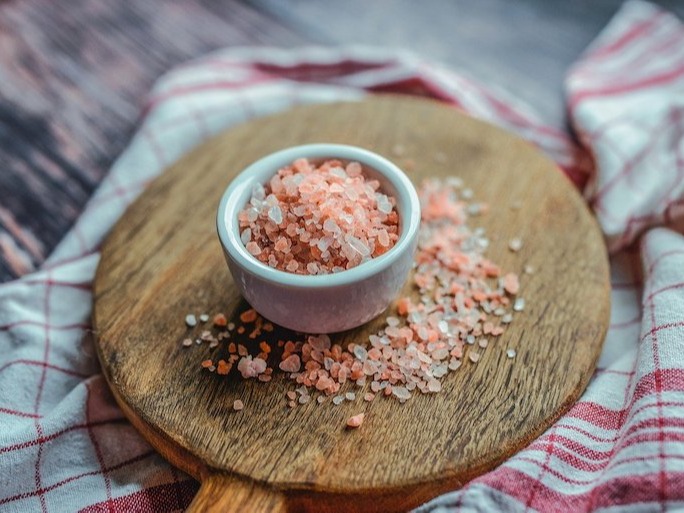
Sodium
Too much sodium (aka salt) is a well-known nutrition no-no, however, too little can also be problematic. Sodium plays a critical role in heart, muscle, and nerve function, and low blood sodium (hyponatremia) can quickly become a medical emergency.
Competitive cyclists are at greater risk for sodium depletion due to losses through sweat, and replacing sodium throughout your ride, in addition to fluid, is an important consideration, especially in warm conditions.
Sodium intake recommendations
The 2020–2025 Dietary Guidelines for Americans recommends adults consume less than 2300mg sodium/day [26].
During exercise lasting longer than one hour, the American College of Sports Medicine (ACSM) recommends supplementing 500-700mg sodium/L of fluid to enhance fluid retention, palatability, and prevent low blood sodium levels (hyponatremia) [27].
Biomarker to watch
Serum sodium is a great indicator of present sodium status but it’s not representative of the short-term fluctuations that occur during exercise.
For competitive athletes, urine-specific gravity testing and/or sweat testing can provide more accurate estimates of sweat sodium losses, and can be used to personalize fluid and electrolyte replacement recommendations.
When and how to supplement sodium
Salt supplementation in the form of salty foods, electrolyte tablets, or drinks fortified with electrolytes, can be helpful for some cyclists to maintain hydration and electrolyte balance during training. Cyclists are more likely to need additional sodium when exercising in hot temperatures, higher altitudes, or during very long workouts lasting two hours or more [1]. Additionally, athletes with high sweat rates (greater than 1.2L/h) or salty sweaters need extra sodium during and after intense or prolonged exercise [1].
Sports dietitian Chrissy Carroll, RD, and USAT Level I Triathlon Coach at
Snacking in Sneakers
, seconds the ACSM recommendation of supplementing 500-700mg sodium/L of fluid during events lasting more than one hour. When using salt or electrolyte tablets, Carroll cautions athletes not to exceed the recommended amount on the package.
Food sources of sodium
Most whole foods naturally contain small amounts of sodium, but the majority of the sodium in our diet comes from table salt added during or after cooking or food processing.
Good sources of extra sodium for athletes include pre-exercise pretzels, popcorn, or crackers (which also provide carbohydrates for quick fuel) as well as sports drinks, gels, and tablets that contain sodium during and after intense/prolonged exercise.
Good to know
Any salt or electrolyte tabs may cause stomach upset so it’s best to experiment with them during training to make sure they are well tolerated.
Summary
Supplements can be helpful for cyclists, given the unique physiological demands of competing and training. However, there’s no “one size fits all” approach here. Supplements should be personalized for each cyclist based on individual factors such as biomarkers, diet, training load, goals, and tolerance. Going overboard on supplements comes with risks and it’s important to pay attention to the dosage and bioavailability of the products you take to prevent adverse effects.
Disclaimer: The text, images, videos, and other media on this page are provided for informational purposes only and are not intended to treat, diagnose or replace personalized medical care.
Key Takeaways
Long-distance cycling increases iron needs, as does training at high altitudes, menstrual blood loss, and injury [1].
Omega-3 supplementation may play a role in enhancing training adaptation, exercise recovery, injury prevention, and subsequent performance in athletes [16].
Supplementing 25 mg zinc/day during training reduces the immune system disturbances associated with rigorous training [20].
Supplements should be personalized for each cyclist based on individual factors such as biomarkers, diet, training load, goals, and tolerance.
References
Thomas, D. T., Erdman, K. A., & Burke, L. M. (2016). Position of the Academy of Nutrition and Dietetics, Dietitians of Canada, and the American College of Sports Medicine: Nutrition and Athletic Performance. Journal of the Academy of Nutrition and Dietetics, 116(3), 501–528.
https://doi.org/10.1016/j.jand.2015.12.006
Ferritin test - Mayo Clinic. (2019, November 28). Mayo Clinic.
https://www.mayoclinic.org/tests-procedures/ferritin-test/about/pac-20384928
Office of Dietary Supplements - Iron. (2020, February 28). National Institutes of Health.
https://ods.od.nih.gov/factsheets/Iron-HealthProfessional
Office of Dietary Supplements - Vitamin D. (2020, October 9). National Institutes of Health.
https://ods.od.nih.gov/factsheets/VitaminD-HealthProfessional/
Medline Plus — Vitamin D Test. (2020, July 31). U.S. National Library of Medicine.
https://medlineplus.gov/lab-tests/vitamin-d-test/
Medline Plus — Calcium Blood Test. (2020, July 30). U.S. National Library of Medicine.
https://medlineplus.gov/lab-tests/calcium-blood-test/
Patel, K. (2021, January 7). Vitamin D. Examine.Com.
https://examine.com/supplements/vitamin-d
Office of Dietary Supplements - Calcium. (2020, March 26). National Institutes of Health.
https://ods.od.nih.gov/factsheets/Calcium-HealthProfessional/
Calcium: Uses, Side Effects, Interactions, Dosage, and Warning. (n.d.). WebMD.
https://www.webmd.com/vitamins/ai/ingredientmono-781/calcium
Office of Dietary Supplements - Magnesium. (2020, September 25). National Institutes of Health.
https://ods.od.nih.gov/factsheets/Magnesium-HealthProfessional/
Nielsen, F. H., & Lukaski, H. C. (2006). Update on the relationship between magnesium and exercise. Magnesium research, 19(3), 180–189.
Patel, K. (2020, October 7). Magnesium. Examine.Com.
https://examine.com/supplements/magnesium
Office of Dietary Supplements - Omega-3 Fatty Acids. (2020, October 1). National Institutes of Health.
https://ods.od.nih.gov/factsheets/Omega3FattyAcids-HealthProfessional/
VanDusseldorp, T. A., Escobar, K. A., Johnson, K. E., Stratton, M. T., Moriarty, T., Kerksick, C. M., Mangine, G. T., Holmes, A. J., Lee, M., Endito, M. R., & Mermier, C. M. (2020). Impact of Varying Dosages of Fish Oil on Recovery and Soreness Following Eccentric Exercise. Nutrients, 12(8), 2246.
https://doi.org/10.3390/nu12082246
Marshall, R. N., Smeuninx, B., Morgan, P. T., & Breen, L. (2020). Nutritional Strategies to Offset Disuse-Induced Skeletal Muscle Atrophy and Anabolic Resistance in Older Adults: From Whole-Foods to Isolated Ingredients. Nutrients, 12(5), 1533.
https://doi.org/10.3390/nu12051533
Philpott, J. D., Witard, O. C., & Galloway, S. (2019). Applications of omega-3 polyunsaturated fatty acid supplementation for sport performance. Research in sports medicine (Print), 27(2), 219–237.
https://doi.org/10.1080/15438627.2018.1550401
Publishing, H. (n.d.). Omega-3-rich foods: Good for your heart. Retrieved February 03, 2021, from
https://www.health.harvard.edu/heart-health/omega-3-rich-foods-good-for-your-heart
Harris, W. S., & Von Schacky, C. (2004). The Omega-3 Index: a new risk factor for death from coronary heart disease?. Preventive medicine, 39(1), 212–220.
https://doi.org/10.1016/j.ypmed.2004.02.030
Thielecke, F., & Blannin, A. (2020). Omega-3 Fatty Acids for Sport Performance-Are They Equally Beneficial for Athletes and Amateurs? A Narrative Review. Nutrients, 12(12), 3712.
https://doi.org/10.3390/nu12123712
Kerksick, C. M., Wilborn, C. D., Roberts, M. D., Smith-Ryan, A., Kleiner, S. M., Jäger, R., Collins, R., Cooke, M., Davis, J. N., Galvan, E., Greenwood, M., Lowery, L. M., Wildman, R., Antonio, J., & Kreider, R. B. (2018). ISSN exercise & sports nutrition review update: research & recommendations. Journal of the International Society of Sports Nutrition, 15(1), 38.
https://doi.org/10.1186/s12970-018-0242-y
Patel, K. (2020c, December 5). Zinc. Examine.com.
https://examine.com/supplements/zinc/
Office of Dietary Supplements - Zinc. (2020, July 15). National Institutes of Health.
https://ods.od.nih.gov/factsheets/Zinc-HealthProfessional/
Micheletti, A., Rossi, R., & Rufini, S. (2001). Zinc status in athletes: relation to diet and exercise. Sports medicine (Auckland, N.Z.), 31(8), 577–582.
https://doi.org/10.2165/00007256-200131080-00002
Wieringa, F. T., Dijkhuizen, M. A., Fiorentino, M., Laillou, A., & Berger, J. (2015). Determination of zinc status in humans: which indicator should we use?. Nutrients, 7(5), 3252–3263.
https://doi.org/10.3390/nu7053252
Barr, S. I., & Rideout, C. A. (2004). Nutritional considerations for vegetarian athletes. Nutrition, 20(7–8), 696–703.
https://doi.org/10.1016/j.nut.2004.04.015
U.S. Department of Agriculture and U.S. Department of Health and Human Services. Dietary Guidelines for Americans, 2020-2025. 9th Edition. December 2020.
Convertino, V. A., Armstrong, L. E., Coyle, E. F., Mack, G. W., Sawka, M. N., Senay, L. C., Jr, & Sherman, W. M. (1996). American College of Sports Medicine position stand. Exercise and fluid replacement. Medicine and science in sports and exercise, 28(1), i–vii.
https://doi.org/10.1097/00005768-199610000-00045
Holick, M. F., Binkley, N. C., Bischoff-Ferrari, H. A., Gordon, C. M., Hanley, D. A., Heaney, R. P., Murad, M. H., & Weaver, C. M. (2011). Evaluation, Treatment, and Prevention of Vitamin D Deficiency: an Endocrine Society Clinical Practice Guideline. The Journal of Clinical Endocrinology & Metabolism, 96(7), 1911–1930.
https://doi.org/10.1210/jc.2011-0385
Lugg, S. T., Howells, P. A., & Thickett, D. R. (2015). Optimal Vitamin D Supplementation Levels for Cardiovascular Disease Protection. Disease Markers, 2015, 1–10.
https://doi.org/10.1155/2015/864370



